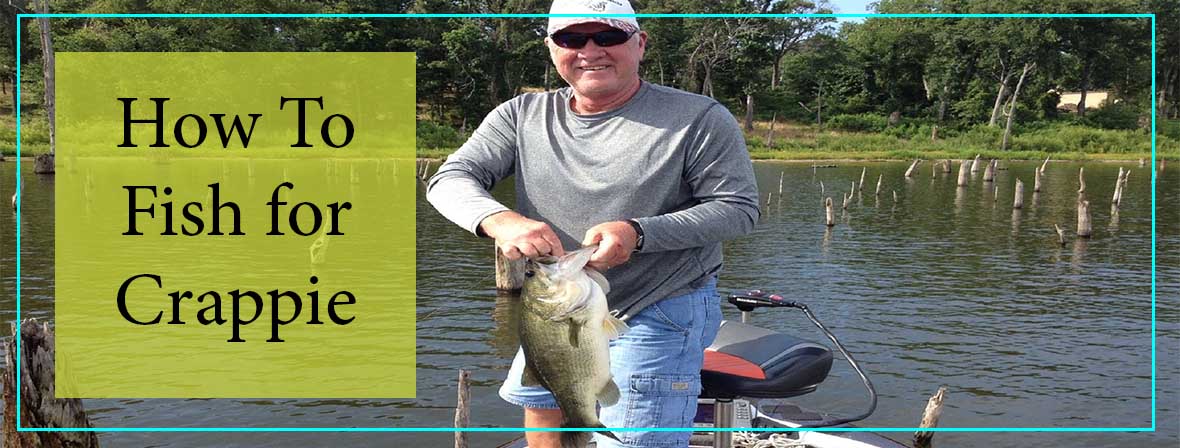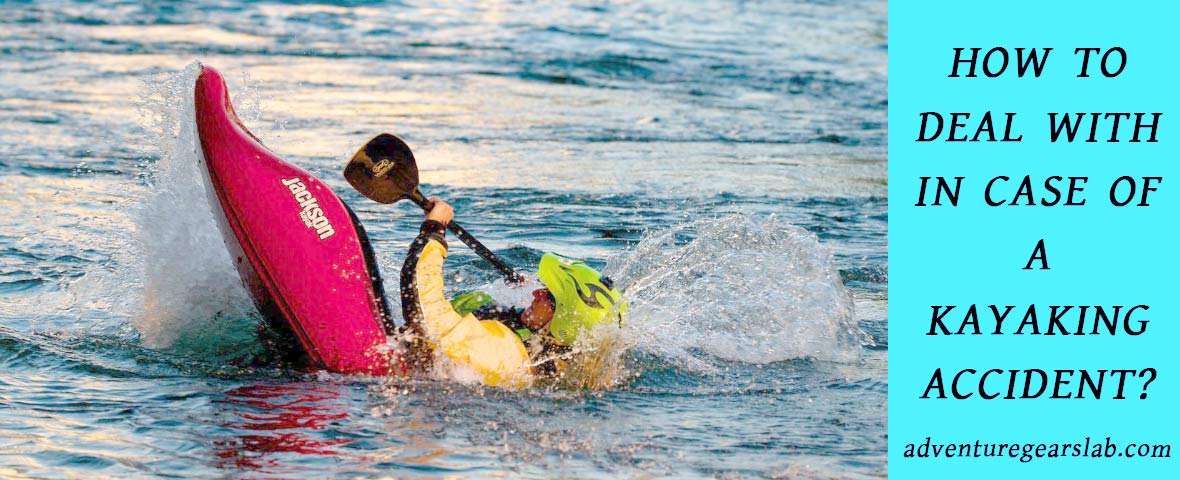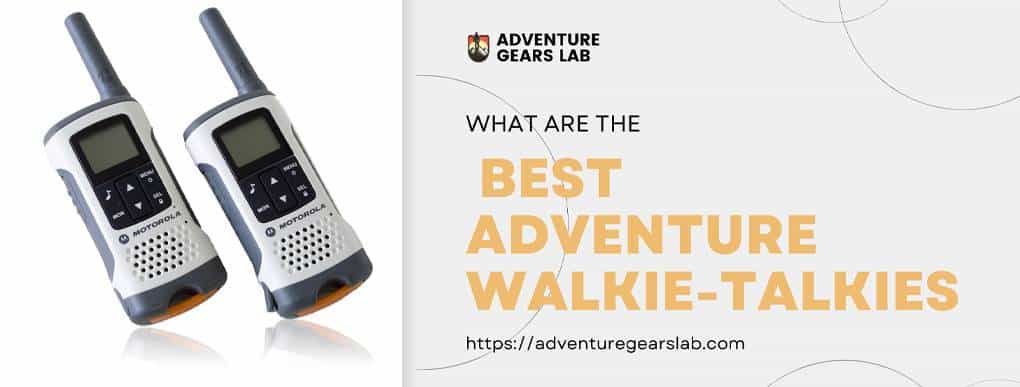Learning how to fish for crappie can take time and practice, but this freshwater fish is one of the most popular game fish for anglers to catch. Crappie are native to North America, and are typically found in freshwater that is mildly acidic and heavily vegetated. They can be caught year round, making them a popular target for ice fishing.
The first step to catching crappie is preparation: you should know where to find them and what equipment to use. Your fishing gear will change based on environment, season, and more: the best ice fishing jigs for crappie will work well in the winter, but may not work so well in warmer weather.
Also Read : Kayak Fishing 101
Once you have the essential fishing gear for crappie fishing, you should employ the best practices for catching this popular fish. We’ll break down how to fish for crappie, so that you can learn the right techniques and catch more fish.
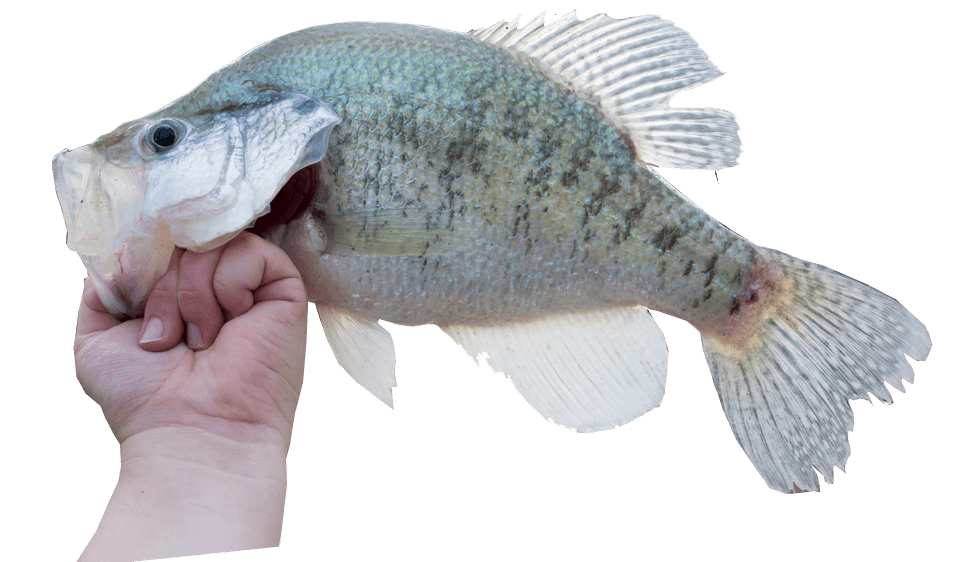
1.Use the Right Gear
It’s vital with any form of fishing to use the right gear, but it holds true for crappie as well. Prepare with the right rod and reel, but especially with the right tackle. Even big crappie tend to bite small bait, so always use small live bait or small jigs or other lures, along with 2 to 6 pound test line.
It can be hard to predict what crappie will bite on any given day, so pack a range of bait and lures. Bring lots of different colors for a diverse range of options to see what works best. Minnows are crappies preferred food, and work well in all seasons.
2. Target Underwater Structures
Crappie tend to linger around underwater structures and cover. It’s helpful to target these structures, as crappie are easier to find here as well as more likely to bite. Survey the water for areas of heavy cover or where you can see submerged structures like fallen trees or weed bends. Consult a topographical map if possible.
When you’re targeting these areas, try to use weedless lures that are less likely to snag, so that you don’t lose tackle while fishing. Popular baits for crappie include minnows, worms, and crickets. The best artificial lure to use for crappie is a jig, although crank baits also work well.
3. Fish the Right Depth
In moderate to cold water, crappie are typically found roughly 3 to 6 feet deep. In these conditions, weigh your rig so that it reaches this optimal depth. Attach a bobber 3 to 6 feet above your weighted line to help you see any movement in your line, as well as to keep your bait presented at the right depth.
In warmer summer months, crappie move deeper into the waters offshore. If you’re fishing for crappie during this season, either wait until dawn or dusk, when crappie come to shallow water to feed, or cast along the bottom where crappie are hiding.
4. Keep Your Line Tight
Crappie are known for having a soft lip, and can often steal bait and escape hooksets. Don’t let your line get too slack, or a crappie might get away. Keep your line tight and stay vigilant for any movement to improve hook sets.
5. Retrieve Slowly
Don’t reel your line in too quickly - a slow retrieve is more likely to result in a catch.
If you’re jig fishing, cast past your target area and retrieve your jig slowly. You can also vertically present jigs, dropping them and letting them stay still at the right depth in the strike zone; a crappie will likely bite if you are patient. Flipping or skipping your jigs can also work well when fishing for crappie.
Crankbaits are another great option - use a medium diving crankbait that will run around 10 feet deep, and pull it in slowly and steadily to trigger a strike. If you’re using live bait, cast towards cover and reel in slowly.
Recommended Resources
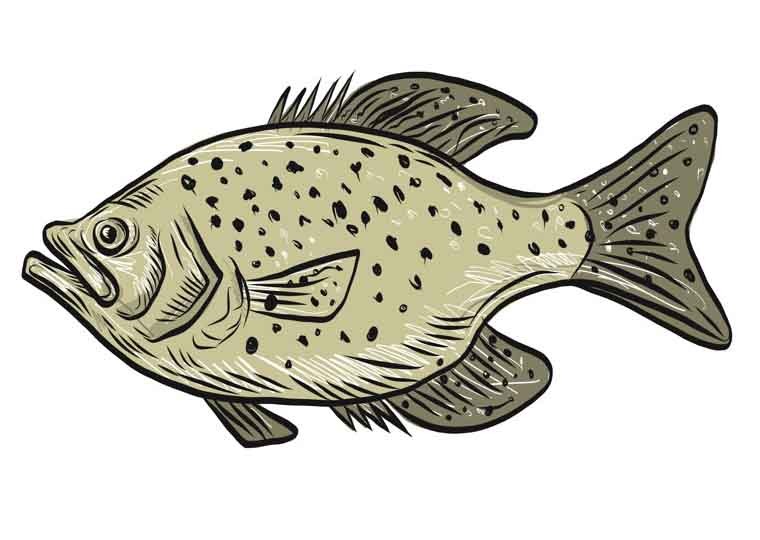












What is the Best Time to Fish for Crappie?
The best time to fish for crappie is typically around dawn or dusk, when crappie are feeding and come to the surface. Low-light hours are commonly the best time to fish for a variety of species, including crappie. Crappie prefer cooler waters, so when the sun is out, crappie tend to stay lower in the water, and are less likely to bite. We recommend early mornings as the best time to catch crappie.













Are Crappie Easy to Catch?
If you are fishing with the right gear and in the right conditions, crappie can be easy enough to catch. The trick, aside from using the right gear, is to know where the crappie are.
Use topographical maps to target areas with underwater structures, or a sonar fish finder to find crappie, and once you present the right bait, they are likely to bite. Crappies often travel in schools, so a target rich area will usually result in a catch.













What is the Best Water Temperature for Crappie Fishing?
Crappie fishing season is typically in the winter. This species prefers cooler waters, and while they can be fished year round, they are easier to catch in the winter. Crappie spawning season is in the winter, so in cold winter temperatures they come to shallow waters close to the shore, often in large populations. Winter crappie fishing is easier, as they are easier to find and more likely to bite.













How Do You Attract Crappie?
According to fishmasters- Crappie react to sight, sound, and smell. Use live bait or artificial lures with fish attractant scent to lure them in. It is also wise to use a variety of different lures to attract crappie, as different colors may be more likely to attract fish on any given day; try different bait or lures and mix it up if you aren’t catching anything! Crappie tend to bite at slower moving bait, so retrieve slowly to trigger strikes.













What’s a Good Bait for Crappie?
Crappie’s favorite food in most environments are minnows. Minnows are arguably the best live bait for crappie, although worms, crickets, and wet flies are also well known baits that attract crappie.
They are attracted to small bait, so even large crappie will bite at a small minnow or cricket. Artificial lures also work well, especially in the winter months. If you use artificial lures, try small jigs or crank baits.













Why are Crappie Rods So Long?
Crappie rods tend to be longer for a few reasons. One is that long rods can cast longer distances. This is useful when crappie fishing because a longer cast will enter the water quietly, so as to not scare off the crappie.
When using a longer rod, you have more reach to simply drop your bait over a crappie-heavy area. This also reduces snags, as you can vertically drop and retrieve through areas with lots of vegetation where crappie tend to flock.
Conclusion-
Learning how to fish for crappie the right way can dramatically improve your ability to make a catch out on the water. These crappie fishing tips and tricks have brought us great success, and we hope they will work for you as well! Let us know in the comments what you think about this tutorial, and share it with your fishing friends to help them better understand how to catch crappie.

